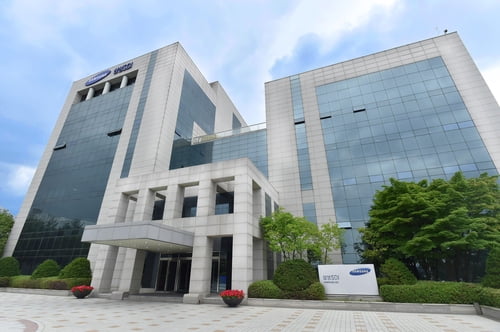Last year’s sales yearly and quarterly all the highest… Operating profit increased by 45% to 671.3 billion won
The market forecast is 26% lower than the impact of provisions… All sectors expected to grow this year
Samsung SDI reached a record high of 11 trillion won in annual sales last year.
The fourth quarter’s sales also peaked on a quarterly basis, and the annual operating profit was 670 billion won, a 45% increase from the previous year.
Samsung SDI announced the fourth quarter of 2020 and its annual results on the 28th.

Last year’s annual operating profit was 671.3 billion won, a 45.26% increase from the previous year.
The annual operating profit is the second largest since 2011, when Samsung SDI declared that it removed the display business and switched to battery as its flagship.
The largest operating profit since 2011 was 715 billion won in 2018.
Annual sales amounted to 11,2948 billion won, an increase of 11.86% from the previous year.
Net profit increased 56.81% to 633 billion won.
Operating profit for the fourth quarter was 246.2 billion won, up 1123.47% compared to the same period last year.
In the fourth quarter, sales increased by 15.3% to KRW 3.25 trillion.
Quarterly sales hit the highest level in a row following the third quarter.
Net profit in the fourth quarter turned to a surplus of KRW 341.9 billion.
However, 4Q operating profit was 26.2% less than the market forecast of 333.4 billion won by Yonhap Infomax.
The company explained that 4Q results were slightly slower as sales of small-sized batteries declined in the fourth quarter and provisions related to electric vehicle fires were reflected.
In the energy (battery) division, sales in the fourth quarter were KRW 2.62 trillion, up 10.3% from the previous quarter, and operating profit was KRW117 billion, down 15.3% from the previous quarter.
In the market, there was also an expectation that Samsung SDI would succeed in turning the electric vehicle battery into a surplus in the fourth quarter of last year, but the turnaround failed due to the setting of provisions related to electric vehicle fires.
However, Samsung SDI predicted that a turnaround could be possible this year as the foundation for a turnaround has already been laid and profitability improvement is clearly appearing.
In a conference call (telephone conference) on the day, Kim Jong-seong, head of management support office, said, “This year, we will continue to improve sales and profitability, focusing on automobile batteries from last year.” As growth, an annual turnaround is expected,” he said.

In the fourth quarter of the electronic materials business, sales were KRW 622.2 billion, down 11.6% from the previous quarter, and operating profit was KRW 129.2 billion, the same as the previous quarter.
Polarizing films entered a seasonal off-demand season, and sales of semiconductor materials also declined due to customer inventory adjustments.
In contrast, OLED (Organic Light-Emitting Diode) materials have expanded their supply to new flagship smartphones.
This year, the market is expected to grow in all sectors such as electric vehicle batteries, ESS, small batteries, semiconductors and OLEDs, Samsung SDI said.
According to eco-friendly policies of governments in Europe, the US, and China, the electric vehicle market is expected to grow rapidly, and demand for the ESS market is also expected to expand.
In response to the expansion of the electric vehicle market, Samsung SDI plans to expand electric vehicle battery facilities on a similar scale as last year.
“The proportion of European projects is high, and for the time being, we will respond mainly to the Hungarian plant,” said Son Michael, managing director of strategic marketing for medium and large batteries.
Samsung SDI also plans to mass-produce the next-generation electric vehicle battery’Gen5′ from the second half of this year to further expand profitability.
Gen5 is the first product to apply the new high-nickel NCA cathode material method to improve energy density, and it reduces material costs by about 20% compared to existing products.
The company said that the product has already been verified and prepared for mass production, so there will be no problems with initial yield.
The demand for small-sized batteries is also expected to rebound as demand for mobility (transportation) increases and the housing economy recovers.
Last year, there were no new expansions for small-sized circular batteries, but this year, Samsung SDI said that some expansions are planned in response to increased demand.
The electronic materials division is also projected to increase demand as customer wafer inputs increase due to the booming front semiconductor market.
Demand for OLED materials is also expected to increase as the adoption of OLED panels for entry-level smartphones increases.
Kwang-sung Kim, executive director of electronic materials strategy marketing, said, “The refinement of the semiconductor process and the expansion of foundries of our customers will have a positive effect on our company.”
The company predicted that in the first quarter of this year, earnings will slow down somewhat due to the influence of the seasonal off-demand season.
Car battery sales are expected to decline due to seasonal off-peak season, while ESS sales are expected to expand overseas, mainly in the Americas, but sales are expected to decrease in Korea.
Sales of small-sized batteries are expected to increase slightly compared to the previous quarter due to increased demand for power tools, and sales and profitability of electronic materials are expected to decrease due to the off-season.
Meanwhile, Samsung SDI announced that it will introduce the electronic voting system from the 51st regular shareholder meeting to be held in March this year.
Earlier, Samsung Electronics introduced the electronic voting system from the shareholders’ meeting last year.
/yunhap news
